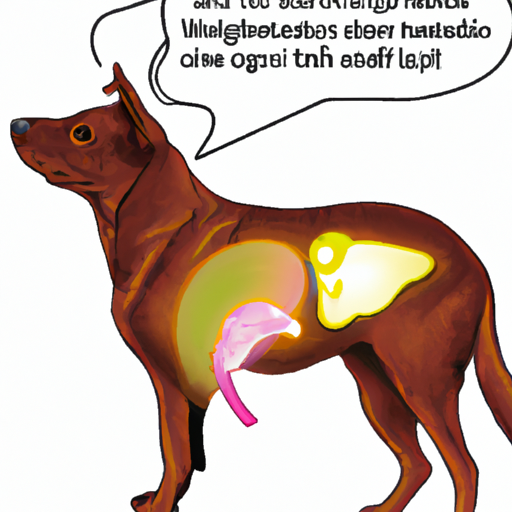Introduction to Liver Shunts
You may have heard the term ‘liver shunt’ from your vet or come across it in your quest for canine health information. A liver shunt, or portosystemic shunt, is a serious health condition that affects the liver’s functioning in your beloved pet. This condition occurs when an abnormal connection allows blood to bypass the liver.
Understanding The Role of The Liver
To fully comprehend what a liver shunt is, you need to understand the critical role the liver plays in your dog’s body. It’s like a chemical processing plant. It detoxifies the blood, removing harmful substances that could otherwise harm your pet. It also helps in the digestion and absorption of nutrients, along with the production of vital proteins.
Table 1: Functions of the Liver
| Functions of the Liver |
|---|
| Detoxification of blood |
| Digestion and absorption of nutrients |
| Production of vital proteins |
What Happens in a Liver Shunt?
Imagine what would happen if a factory’s raw materials were bypassed and sent directly for packaging. That’s exactly what happens in a liver shunt. The liver is bypassed, and the unfiltered, undetoxified blood circulates throughout your dog’s body. This can lead to a series of health issues, like poor growth, behavioral abnormalities, gastrointestinal problems, and urinary issues.
Types of Liver Shunts
Liver shunts in dogs can be classified into two main types:
- Congenital Shunts: These are present from birth and are often diagnosed within the first year of a dog’s life.
- Acquired Shunts: These develop later in life, often as a result of liver disease or other health conditions.
Managing a Liver Shunt
Even though a liver shunt is a serious condition, it’s not the end of the line for your furry friend. With the correct diagnosis and proper management, dogs can lead a relatively normal life. Here’s some advice:
- Special Diet: Your vet may recommend a special diet that is easier on the liver and helps prevent the build-up of toxins.
- Medication: Certain medications can help control the symptoms and ensure better liver function.
- Surgery: In some cases, surgery might be an option to correct the shunt.
Frequently Asked Questions
What are the symptoms of a liver shunt in dogs?
Symptoms can include poor growth, behavioral abnormalities, gastrointestinal problems, and urinary issues.
Can a dog live a normal life with a liver shunt?
Yes, with the correct diagnosis and proper management, dogs can lead a relatively normal life.
Is a liver shunt in dogs curable?
While not curable, a liver shunt can be managed with a special diet, medication, and in some cases, surgery.



